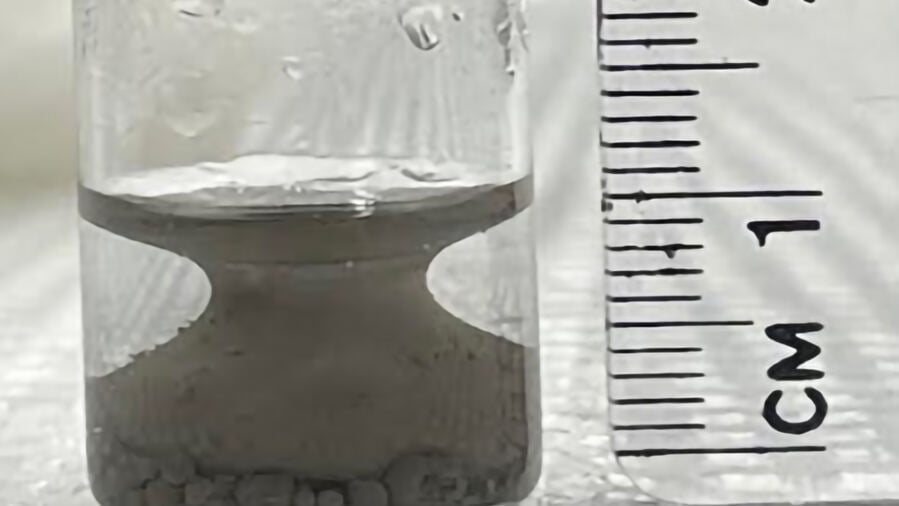A chance discovery in a Massachusetts laboratory has upended long-held scientific assumptions about how liquids behave, leaving even senior researchers puzzled. When UMass Amherst graduate student Anthony Raykh shook a mixture of oil, water, and magnetized nickel particles, he witnessed something that shouldn’t be possible – the liquid spontaneously formed the elegant curves of a Grecian urn, and kept returning to that shape no matter how violently it was disturbed.
“I thought ‘what is this thing?’ So, I walked up and down the halls of the Polymer Science and Engineering Department, knocking on my professors’ doors, asking them if they knew what was going on,” Raykh said. No one did.
The phenomenon, detailed in a recent Nature Physics publication, has been dubbed a “shape-recovering liquid” by the research team. What makes this discovery particularly significant is how it appears to contradict established principles of thermodynamics that govern how liquids mix and separate.
Thomas Russell, Silvio O. Conte Distinguished Professor of Polymer Science and Engineering at UMass Amherst and one of the paper’s senior authors, explained the normal process using a familiar example: “Imagine your favorite Italian salad dressing. It’s made up of oil, water and spices, and before you pour it onto your salad, you shake it up so that all the ingredients mix.”
In standard emulsification – the process that allows normally incompatible substances like oil and water to temporarily mix – tiny particles reduce the tension at the boundary between the liquids. But in Raykh’s experiment, the strongly magnetized nickel particles did the opposite, actually increasing the tension and forcing the mixture into a consistent curved shape.
The discovery caught the attention of David Hoagland, professor of polymer science and engineering at UMass Amherst and the paper’s other senior author. Hoagland specializes in soft materials and recognized the potential significance of what his graduate student had stumbled upon.
After extensive experimentation, the UMass team collaborated with colleagues at Tufts and Syracuse universities to construct simulations that could explain the bizarre phenomenon. Their conclusion points to a surprising interaction between magnetism and fluid dynamics.
“When you look very closely at the individual nanoparticles of magnetized nickel that form the boundary between the water and oil,” said Hoagland, “you can get extremely detailed information on how different forms assemble. In this case, the particles are magnetized strongly enough that their assembly interferes with the process of emulsification, which the laws of thermodynamics describe.”
What makes this finding particularly intriguing is that it represents a genuine surprise in a field where most behaviors can be predicted through existing models. The researchers’ detailed analysis revealed that the attractive in-plane dipolar magnetic interactions between particles are responsible for the unexpected behavior.
“When you see something that shouldn’t be possible, you have to investigate,” Russell said.
While the liquid’s distinctive urn shape evokes ancient Greek pottery, its scientific implications are thoroughly modern. The research suggests that strong magnetism can create previously unknown states of matter at the boundaries between liquids.
The discovery adds a new chapter to our understanding of soft-matter physics, an area that explores materials that aren’t quite solid but not fully liquid either – like gels, foams, and various biological tissues. These materials often display unique behaviors that can lead to innovations in medicine, manufacturing, and environmental technologies.
Though no immediate applications have been identified, the finding opens new avenues for designing materials with controlled shapes and behaviors. Raykh expressed enthusiasm about exploring the potential of this never-before-seen state and its influence on the field.
The research, funded by the U.S. National Science Foundation and the U.S. Department of Energy, demonstrates how scientific serendipity – when keen observation meets unexpected results – continues to drive discovery in fundamental physics.
For now, the mystery of the shape-recovering liquid serves as a reminder that even in well-established scientific fields, nature still holds surprises that can shake up our understanding of the physical world.
If our reporting has informed or inspired you, please consider making a donation. Every contribution, no matter the size, empowers us to continue delivering accurate, engaging, and trustworthy science and medical news. Independent journalism requires time, effort, and resources—your support ensures we can keep uncovering the stories that matter most to you.
Join us in making knowledge accessible and impactful. Thank you for standing with us!

